
THE common green magpie (Cissa chinensis) or hunting cissa used to be common in UK and European aviaries. But since the temporary (later permanent) UK ban on imported wild birds in 2005 due to concerns about the spread of avian flu, they seem to have all but vanished in UK aviaries.
For the related species Javan green magpie (C. thalassina) aviaries have been built in the jungle of Java for a soft-release programme. But enough birds need to be bred by the world’s zoos before this can happen. Chester Zoo is the torchbearer for this endangered species.
The Silent Forest project for the Javan green magpie is trying to prevent its extinction in the wild, along with that of other Asian songbirds. Some zoos, such as Chester, have pairs off-exhibit and are trying to breed these rare birds.
I kept the common species in the early 1990s, and found them to be active and very intelligent, like the majority of corvids. They need to be stimulated and have plenty to do or they become bored and can become destructive in an aviary. Once I came home from work and went to feed mine. I thought vandals had broken in. The plants were uprooted, pots turned over and food scattered all over the floor.
The need to provide them some stimulation makes them a species not for everyone. They need to be away from birds in other aviaries, as I found out. They will terrorise birds in adjacent housing and, if they could, would pull birds into the wire. My friends Tony and Kim, who have them, say the same. Tony has witnessed the cock bird give a soft call to lure the birds next door close, then pounce on the wire.
Tony’s birds are in a 7.3m (24ft) aviary with heavy planting. This keeps them occupied and helps to prevents the plumage from turning blue. (In captive birds the natural green gradually turns a pale blue over time.)
Bu hikaye Cage & Aviary Birds dergisinin November 27, 2019 sayısından alınmıştır.
Start your 7-day Magzter GOLD free trial to access thousands of curated premium stories, and 9,000+ magazines and newspapers.
Already a subscriber ? Giriş Yap
Bu hikaye Cage & Aviary Birds dergisinin November 27, 2019 sayısından alınmıştır.
Start your 7-day Magzter GOLD free trial to access thousands of curated premium stories, and 9,000+ magazines and newspapers.
Already a subscriber? Giriş Yap
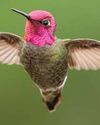
The World's Best-Known Hummingbird?
Intensively studied, the gem-like Anna’s hummingbird is a welcome visitor to the gardens of America’s most populous state: California. Bill Naylor investigates its life history
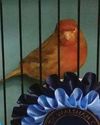
The charm of the English Cinnamon
Despite its long and complicated history, the true Cinnamon canary is still with us – in the hands of a tiny group of breeders. DONALD SKINNER-REID reckons it deserves wider appreciation
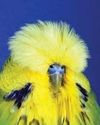
Spangles: a personal overview
FRED WRIGHT relates a budgie story of over-exploitation, consequent problems and abundant potential for the future

New converts to old breeds
Old and rare canaries have a reputation for adding fresh interest and challenge to the hobby. PETE HOOK and NICK JOY agree, and explain the birds’ charm to Dave Brown

Themed aviaries are a hit with the public at annual Stafford show
DECORATIVE AVIARY DISPLAYS from a CBS and an online bird keeping advice group were voted in the top three by visitors for the inaugural Stafford Aviary Competition.
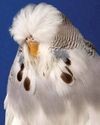
Pieds with potential
More than just a lesser variety, the dominant pied will introduce challenge and change into most studs, reckons CLIVE WAKEMAN. Here he discusses pairings to try and others to avoid

Club News
Welcome to the club and show pages – the bit that’s all about you Results: convention, specialist & rare and Breeder of the Year

Canaries Month by Month:
With Christmas around the corner, BRIAN KEENAN is well into his winter programme, and reckons he might deserve a nice outcross
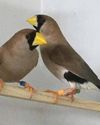
Smart Choice, Docile Nature
Dave Brown welcomes the masked grassfinch to his birdroom and shares advice on this lovely Australian species
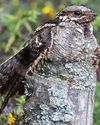
The truth about the ‘flying toad'
Odd local names and weird superstitions can’t hide the beauty and elegance of the nightjar, a species that has made a fascinating subject in a few zoo collections, reveals BILL NAYLOR